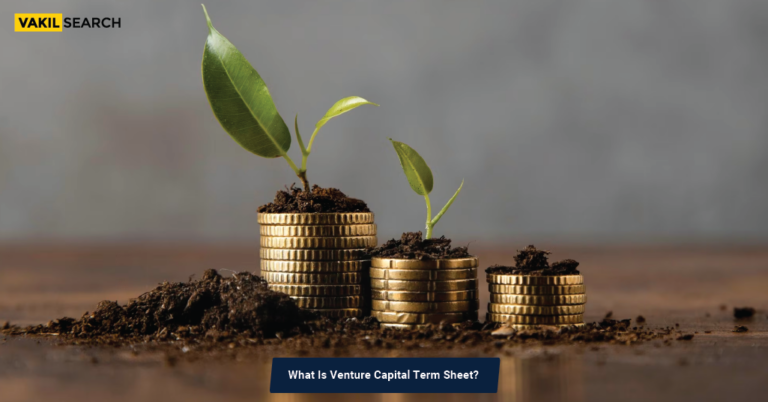A term sheet is an official agreement signed after a pitch session or an initial corporate meeting to discuss the potential deal. Know more about its significance in the article that follows.
Introduction
A key components of the Term Sheet is a contract between an investor and the owner of a start-up. The parties (startup owners, angel investors, and venture capitalists) exchange a document that sets forth the main policies and terms of the investment.
Before the official agreements are finalised and the strenuous due diligence process is started, the term sheet summarises the major points of the deal contracts and addresses any differences. A nonbinding term sheet may also be known as a Memorandum of Understanding (MoU) or a Letter of Intent (LoI).
Term sheets are generally ‘Non-Binding’ because it simply reflects the significant and broad points of contract between the two parties concerning the terms of the investment. It serves as a template for use in generating final agreements by internal or external legal teams.
The case’s facts and circumstances must be considered while determining the term sheet’s character, or ‘whether binding or not binding’. Term sheets are a written statement outlining a proposed deal’s crucial monetary and other aspects, which are still subject to discussion and certain restrictions. It serves as a guideline before creating final legal documents like a shareholder agreement, business transfer program, joint venture agreements, subscription agreements, and many more.
Key Components of the Term Sheet
Here are a few of the most important elements of a Term Sheet –
New Securities Offered
Preferred & common shares are available to investors. Common shares are normally subordinate to preferred shares in terms of rights. For instance, preference shareholders are prioritised over equity or regular shareholders and get the necessary dividends. However, voting rights are typically absent from preferred shares. On the other hand, common shares frequently only have a single vote that each share may use if a shareholder vote is necessary.
Capital Invested
The purpose of this section is to provide a brief review of the company’s finances in light of the recommended additional investment. The reader can also calculate the pre-money & post-money assessments of the Company using the data in this section. Pre-money assessment, as the name suggests, pertains to the Company’s acceptable rate prior to the new funding, and post-money valuation relates to the company’s calculated value after the investment.
Governing rights
This is about an investor’s power to suggest or pick a potential board of directors candidate. However, they might be adamant about appointing independent members who would likewise have a majority and attend each board meeting with one or more guests. Typically, only a tiny part of the board’s nominees are requested by investors.
Dividends
A regular (quarterly or annual) payment from business earnings to its shareholders is known as a dividend. Including dividend provisions is one of the major tools that enable investors to protect their investment and leave a transaction with at least a probability of a return in the event of the company’s collapse.
Instead of being distributed regularly for start-ups, the dividend is allowed to grow over time by growing the investor’s preferred ownership stake. After the investment, the preferred equity would have increased over time, & the investor would profit from the fixed return rate.
Additional Guidelines
These include exclusivity terms (the company’s promise to reject rival proposals), the investor’s right to conduct due diligence before closing, and payment of the investors’ expenses.
Investor Protections
Investor approval is required for significant company actions. The creation and issuance of shares that are more valued than the shares that investors now own, taking on secured debt, reorganising the company, repurchasing shares, & paying dividends are a few examples. Additionally, managerial choices like appointing and dismissing senior executives and changing the direction of the business operations may be made.
The provisions and content of a term sheet negotiation may vary and be altered to suit various transactions. A term sheet is required for a variety of transactions, including the following:
Deals Involving Private Equity and Venture Capital (PE/VC) Produce Financial Gains
PE transactions are done later in the company’s life cycle, whereas VC transactions are undertaken in the early phases of a corporation or start-up. However, both demand that the term sheet should mention the same phrases. Terms like valuation, investment amount, anti-dilutive clauses, affirmative rights, liquidation, conversion rights, etc., are typically included in a PE/VC term sheet.
M&A (Mergers and Acquisitions) Transaction
M&A transactions are carried out to accomplish business restructuring and strategic benefits. The term sheet for an M&A deal will detail the price offered, mode of payment, assets and liabilities, company background, and other standard terms.
What Does It Serve?
Before spending time and resources on due diligence, the term sheet’s goal is to identify potential issues with the proposed transaction and evaluate the transaction’s rights and obligations before signing definitive agreements.
A term sheet that has been carefully negotiated minimises potential conflicts and identifies “deal-breakers.” The term sheet also specifies the deal’s goals for growth, start-up valuation, & risk reduction. The term sheet is a template for creating paperwork when selling or buying a business, buying or selling shares, or taking part in capital-raising rounds.
Why Is It Critical to Negotiate a Successful Term Sheet?
Any business that raises finance is taking a tremendous risk, so creating accurate term sheets is essential. It’s a high-stakes business; therefore, understanding term sheets is insufficient. One must know who they are cooperating with, how the procedure functions, and potential problems.
You must be aware of potential issues and how to head them off to satisfy the demands of both your own business and your investors. If you don’t, you run the risk of dilution greater than you expected, of being unable to raise more money in the future or being forced out of your own Company.
Conclusion
Understanding the key components of the term sheet provides clarity and enables effective negotiations between parties. If the founders were aware of the terminology included in a term sheet & its implications, they would be better equipped to make informed judgments and take actions that would benefit the business. Term sheets must be fully understood before continuing with the deal closing & establishing contractually binding conditions for the investment. If you need more information about the same, feel free to get in touch with Vakilsearch.
Also, Read:










